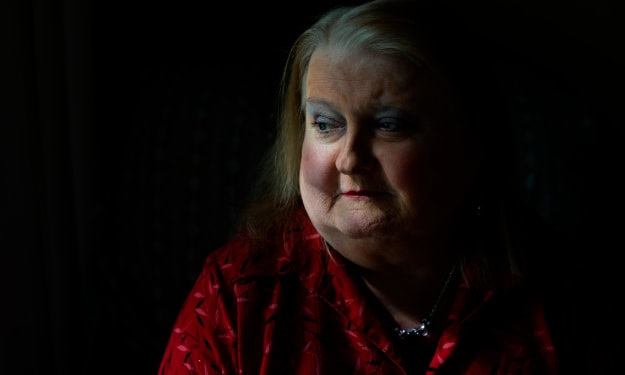
Leni Riefenstahl was the Nazi propagandist behind such odious films as Triumph of the Will and Olympia. As a director, she had a pioneering, technical brilliance that almost redeems her for her role in helping to foster adulation and reverence for one of the worst and most destructive fascist killing machines the world has ever known.
In The Holy Mountain (Not to be confused with the Jodorowsky film of the same name) she is merely a dancer, a performer, whose sinuous moves and physical exertions seem inextricably bound over or linked, spiritually, as it were, to the crashing waves of the exultant sea--to nature, to the majesty and mystery of the "Holy Mountain."
The story is very simple, yet set against the backdrop of the forbidding mountains, and in a nightclub wherein Riefenstahl ("Diotima" in the film) dances for adoring, Weimar-era audiences. The film has extended scenes of her dancing, nearly surrealistic, expressionistic shots of her face, and much, much beautiful, stark, and realistic images of the mountains and mountain life. It moves from the pure fantasy of dance, from the palatial ski resort or mountain retreat to the humble cottage of a peasant family and their children.
Karl (Louis Trenker), an engineer, falls in love with Diotima, but when she hands off her scarf to his friend Vigo (Ernst Petersen), Vigo believes that Diotima loves him. A jealousy erupts as Karl sees her try to comfort Vigo, his face resting upon her knees, and a jealous competitive angst develops between the two men. They both decide to try and conquer the mountain, a decision that leads to their undoing.
Before this, the film switches from a more expressionistic, fantastical, and dream-like feeling, to a more realistic documentation of expert skiers involved in a competition. Then we have shots of mountain climbers with their picks and nail-studded shoes, digging into the ice. There is a long swim through the holy waters of human realism before the film again becomes something dire, wrapped in the web of a final, mystifying vision.
The final vision, the equivalent of a trip out of the body to an enchanted place of pure ice, and up a steep set of steps to a smoking, giant, torch-like cauldron, prefigures the majesty that Riefenstahl would try so hard to project of Nazi pomp and circumstance in Triumph of the Will, that sense that man was looking skyward, heavenward, to a Holy Destiny, that death, symbolic death, was coming to transform him into a godlike being, one who could ascend heavenward, to the pinnacle of the next phase of human evolution--a side shot of Riefenstahl's face suggests the equivalent of a shot from Triumph of the Will, and it is clear she was herself later influenced by the direction of Arnold Fanck when it came to making her film.

In the end, she is left alone, and the audience is left to ponder the deep affinity that Riefenstahl seemed to possess with her quasi-pagan dance, juxtaposed as they were against the awesome crashing power of the sea; of the arrogant and presumptuous human belief that man can, somehow, be one with and even best the forces of nature (one scene, the emotional breakdown of Karl, seems to be visually cross-referenced with scenes of an avalanche); and that these forces will, in all likelihood, turn on him, to exact penance for his offense.
The picture ends with the German intertitles reading "Faith." It would be a short seven years before the Nazi Party would come to power in Germany, and create the bloodiest war and the most horrifying epoch of Twentieth Century history. Arrogance and presumptuousness would place one man in total power to create and commit terror and murder on a scale never quite realized before in the annals of humankind.
Leni Riefenstahl would be a party to that. Though she would be condemned by Allied courts as a "fellow traveler," she was not held responsible directly for "war crimes." She died, still living the life of an adventuress quite into her nineties. She died at the age of 101, in 2003.
Whatever her legacy though, this film remains untouched by it, a glorious example of Weimar-era silent filmmaking, a simple tale of jealousy amidst a larger, spiritual backdrop of exalted and titanic forces of nature, against the sprawling, majestic and terrifying ice and snow that beards the face of the Holy Mountain.
About the Creator
Tom Baker
Author of Haunted Indianapolis, Indiana Ghost Folklore, Midwest Maniacs, Midwest UFOs and Beyond, Scary Urban Legends, 50 Famous Fables and Folk Tales, and Notorious Crimes of the Upper Midwest.: http://tombakerbooks.weebly.com






Comments
There are no comments for this story
Be the first to respond and start the conversation.